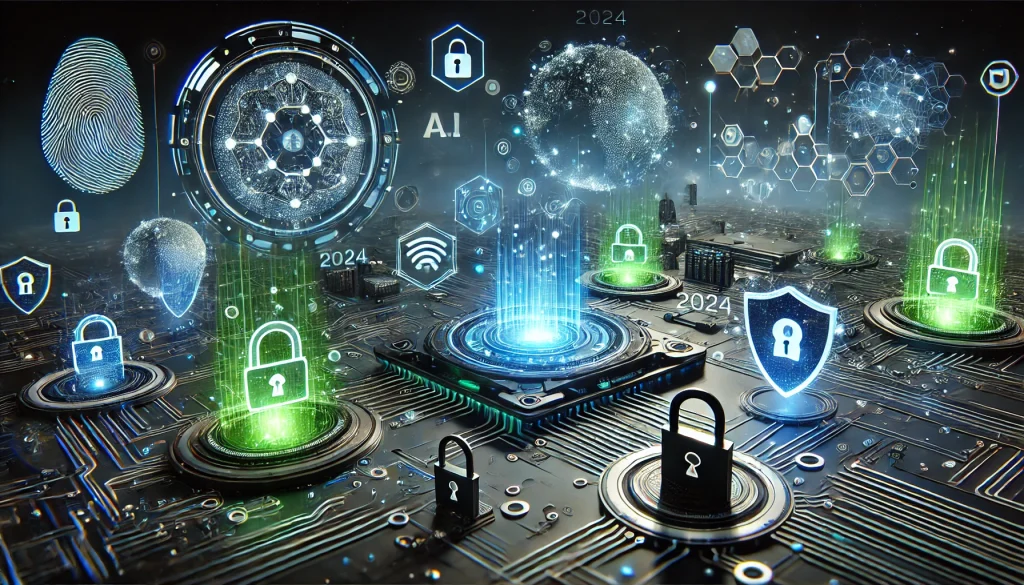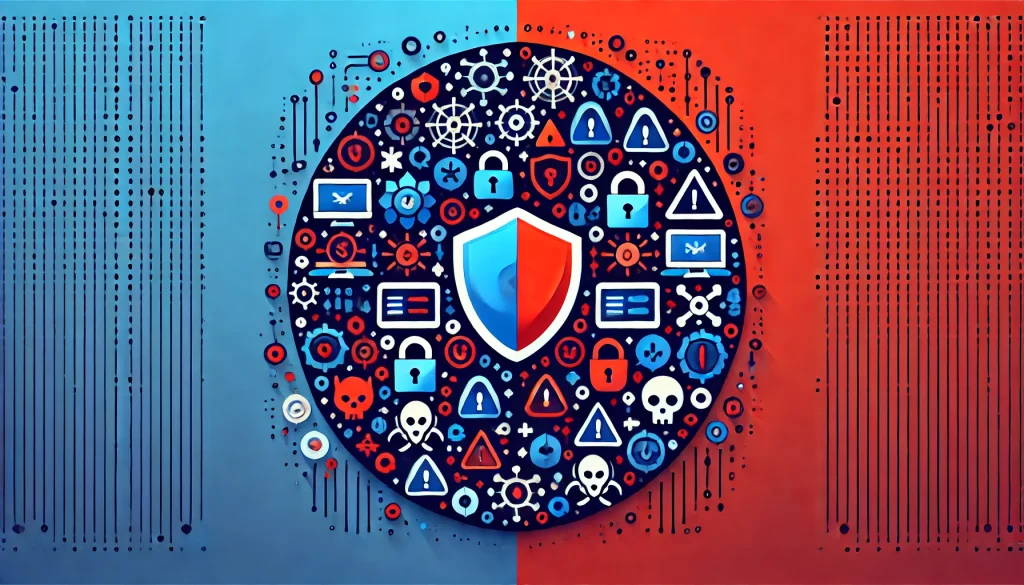Introduction
In 2024, cybersecurity trends will have evolved significantly as new challenges and innovations shape the digital landscape.
Understanding these trends is critical for organizations and individuals alike as cyber threats become increasingly sophisticated. In this review, we focus on the most influential cybersecurity trends for 2024, providing insights into what’s new, what’s improved, and what still needs attention. Whether you’re an IT professional or simply interested in staying secure online, this guide will help you navigate the complexities of cybersecurity in 2024.

Overview
The cybersecurity landscape in 2024 is characterized by advances in artificial intelligence, the rise of quantum computing threats, and a heightened focus on data privacy. Key characteristics of this year’s trends include the increased use of AI-driven security measures, more sophisticated phishing attacks, and the growing importance of zero-trust architectures. As cybercriminals continue to evolve, so must strategies to counter them. This overview highlights the most important aspects of cybersecurity in 2024, outlining the factors driving the industry forward.
Pros and cons

Pros
- Advanced AI-powered security: The use of AI in cybersecurity has dramatically improved threat detection and response times, making systems more resilient to attacks.
- Increased awareness and adoption: Organizations are more aware of cybersecurity risks and investing in strong security measures, which leads to better overall protection.
- Zero-trust architecture: This approach reduces the risk of insider threats by ensuring that no entity inside or outside the network is trusted by default.
Cons
- Increasing threat sophistication: As defenses improve, so do cybercriminals’ tactics, resulting in more sophisticated and difficult-to-detect attacks.
- High cost: Implementing advanced cybersecurity measures can be expensive, especially for small and medium-sized businesses.
- Complexity of implementation: Integrating new technologies like AI and zero-trust models can be complex and require specialized skills and knowledge.
Deep dive analytics

AI-powered security
AI is playing an increasingly important role in cybersecurity, enhancing threat detection, anomaly detection, and automated response capabilities. AI algorithms can quickly analyze vast amounts of data to identify patterns and threats that human analysts might miss. However, this reliance on AI also creates potential vulnerabilities, such as the risk of attacks where hackers manipulate AI models to bypass security measures.
Quantum computing threats
Quantum computing poses a serious threat to current encryption methods. While the technology is still in its infancy, its potential to break traditional encryption codes is growing. Organizations should consider quantum-resistant algorithms to prepare for the future of data security.
Zero Trust Architecture
The Zero Trust model is becoming a cornerstone of modern cybersecurity strategies. Zero trust models work on the principle of “never trust, always verify” and thoroughly validate all access requests. This model is particularly effective at protecting against insider threats and lateral movement within the network, but it can be challenging and resource-intensive to implement.
Phishing and social engineering
Phishing attacks remain one of the most common cyber threats, but their methods are becoming more sophisticated. In 2024, phishing campaigns will become more targeted, using AI to personalize attacks and increase their success rate, making traditional defenses less effective and requiring ongoing training and advanced filtering tools.
Compare
When comparing cybersecurity trends in 2024 to previous years, several differences stand out. The integration of AI into security measures has increased significantly, making threat detection faster and more accurate. However, cyber threats are also becoming more sophisticated as attackers utilize the same technology. The shift to zero-trust architectures moves away from the traditional perimeter-based security model and provides better protection, but at the cost of increased complexity. With the looming threat of quantum computing, the urgency to adopt quantum-resistant encryption has never been greater.
Compare cybersecurity trends
| Features | Solutions for 2023 | Solutions for 2024 |
|---|---|---|
| AI integration | Limited | Broad |
| Cost | Normal | High |
| Regulatory requirements | Less stringent | Stricter |
Conclusion
The cybersecurity landscape in 2024 is both challenging and full of potential. Advancements like AI-powered security and zero-trust architectures offer powerful defense mechanisms, but they also introduce new complexities and costs. Staying ahead of cyber threats requires ongoing education and strategic planning, not just adopting the latest technologies. Overall, the trends for 2024 reflect the growing awareness and sophistication of cybersecurity, while also highlighting the ongoing arms race between defenders and attackers. Embracing these trends is not a recommendation, but a necessity for organizations that want to stay secure.
Evaluation
4/5 – Cybersecurity Trends for 2024 offers strong defenses, but comes with challenges of cost and complexity.
FAQ
What are the top cybersecurity trends for 2024?
AI-driven security, zero-trust architectures, and quantum computing threats are some of the key trends.
Why is zero-trust architecture important?
Zero trust architecture reduces the risk of insider threats by verifying all access requests before granting access.
How will AI impact cybersecurity in 2024?
AI improves threat detection and response, but it also creates new vulnerabilities, such as the potential for hostile attacks.
See also
- KPMG. (2024). Cybersecurity considerations 2024. https://kpmg.com/xx/en/home/insights/2024/01/cybersecurity-considerations-2024.html
- Simplilearn. (n.d.). Top cybersecurity trends. https://www.simplilearn.com/top-cybersecurity-trends-article
- Brooks, C. (2024, June 5). Alarming cybersecurity stats: What you need to know in 2024. Forbes. Retrieved from https://www.forbes.com/sites/chuckbrooks/2024/06/05/alarming-cybersecurity-stats-what-you-need-to-know-in-2024/
